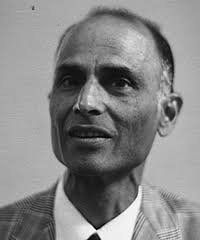Harish-Chandra (1923–1983) was an India-born American mathematician and physicist best known for his pioneering work in representation theory, particularly on the representation of Lie groups and Lie algebras. His contributions have had a lasting impact on both mathematics and theoretical physics.
Born on October 11, 1923, in Kanpur, India.
Studied at the University of Allahabad, earning his master’s degree in physics.
Went to the University of Cambridge in 1945, where he worked under Paul Dirac, one of the founding fathers of quantum mechanics.
While working under Dirac, Harish-Chandra developed the theory of infinite-dimensional representations of Lie algebras.
This work initially arose in quantum mechanics, where it was necessary to analyze the effects of symmetries on particle and wave motion.
His insights laid the groundwork for the modern representation theory of semisimple Lie groups.
Expanded the work of Hermann Weyl and Élie Cartan.
Made fundamental contributions to the Plancherel theorem for semisimple Lie groups, which describes how functions decompose into irreducible representations.
Developed the Harish-Chandra–Schwartz space, which is crucial for harmonic analysis.
Provided a method for computing characters of representations, which is critical in modern algebraic geometry and number theory. After leaving physics, he focused entirely on mathematics.
Held positions at the Tata Institute of Fundamental Research (TIFR), Columbia University, and the Institute for Advanced Study (IAS) in Princeton.
Elected as a Fellow of the Royal Society (FRS) in 1973.
His work forms the foundation of Langlands’ program, which connects representation theory, number theory, and geometry.
The Harish-Chandra Research Institute (HRI) in India is named in his honor.
His contributions continue to influence modern mathematical physics, representation theory, and harmonic analysis.
Harish-Chandra passed away on October 16, 1983, leaving behind a profound legacy in mathematical physics.







